File updated on November 12, 2017
The history of the LaGG-3 starts when Vladimir Petrovich Gorbunov, then
head of the Technical Department of the NKAP (Ministry of the Aircraft Industry)
in 1939, thought to build a new fighter of all-wood construction, to prevent
shortage of aluminum alloys in case of a war. The design of the new fighter
was forthemost assigned to Semyon A.Lavochkin, working under the direction of
Gorbunov, then Mikhail Ivanovich Gudkov joined to the group creating a 'triumvirate'.
In the spring of 1939 the group exposed the preliminary project to the Ministry
of the Aircraft Industry, Michael Kaganovich, that approved and appointed the
trio at the head of a newly formed OKB, including many technicians of the former
Silvanskiy OKB, liquidated after the failure of the I-220 fighter. The new OKB
moved to Zavod 301 in summer 1939, being then known as OKB-301. This plant was
a previous furniture factory, converted in 1938 to building Caudron planes under
French license.
The Soviet Air Force Research Institute (NII VVS) approved the preliminary
drawings, referring to them as 'Project K' and then 'I-301'. Some postwar source
suggested the name I-22, but it doesn't result in any document of that age.
The project was in concurrence with the I-26 of Yakovlev, the I-200 of Mikoyan,
the I-28 of Yatsenko and the I-21 of Pashinin.
The work of OKB-301 in late 1939 was somewhat inconclusive due to friction
between its heads, so the NKAP appointed Lavochkin, the most competent of them,
as chief.
The main characteristic of the I-301 was the use of 'delta wood', that is wood
impregnated with phenol formaldehyde resin VIAM B-3, for load-bearing structural
elements as the wing spars and fuselage longerons. The resin resulted irritating
for the skin of workers, so appropriate precautions and protections had to be
taken. On the other hand, the resin was able to fill gaps up to 3 mm between
pinewood parts, so it compensated errors in cutting and shaping pieces. This
material is still utilized to build boats.
The I-301 was ready in March 1940. It appeared painted with an high polished
cherry red. Some sources suggest that it was shown in unpainted wood impregnated
by resin and surnamed 'piano', but available photos don't seem to confirm this.
The plane had a semi-monocoque wooden fuselage starting from the front of the
cockpit; stabilizators, fin and the wings were mainly wooden. The wing was divided
into a central part, attached to the fuselage, and two detachable consoles.
Only structural elements were made of delta wood, while the skinning was made
by gluing layers of birch veneer and plywood. Control surfaces had a metallic
structure covered with fabric, while flaps, engine cowling panels, propeller
and other parts were made in aluminum alloy.
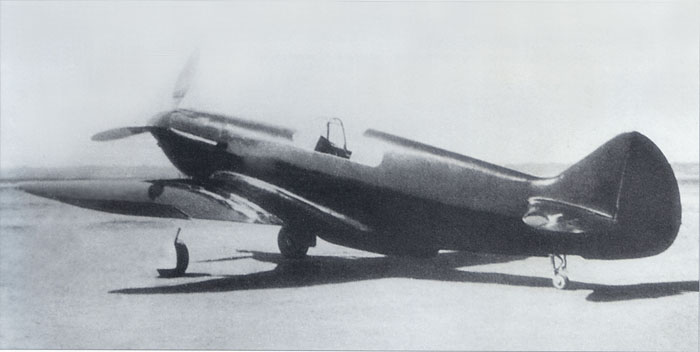 |
A photo of I-301 in its original form, the only one without the sliding
hood.
The uniform and polished cherry red surface is evident.
The landing gear doors give the idea to be still unpainted.
Looking carefully, one can see the folded-up end of the doors, as on
I-16 and MiG-1.
|
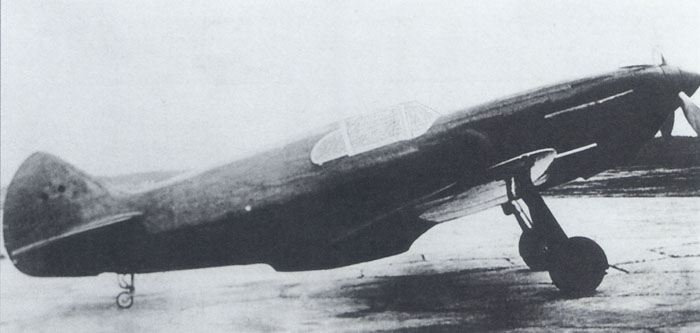
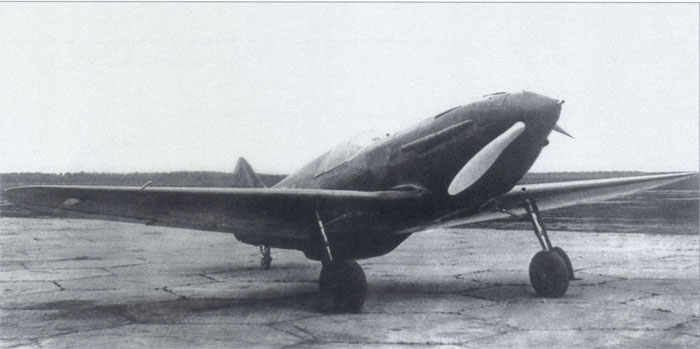
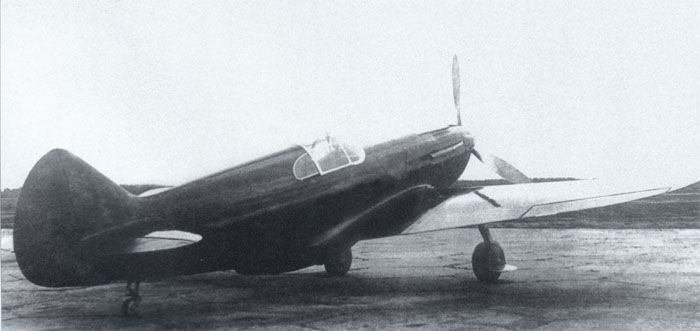
|
It's easier to describe it making comparisons with the better known production
LaGG-3s:
- different shape of the ventral cooler, particularly of the outlet;
the outlet flap is not visible here, but presumably it corresponds to
the straight part of the rear half of the cooler's profile;
- different windshield with Mustang-like curved lower profile and two
more nearly horizontal side struts;
- sliding hood with transparent side panels divided in two sliding halves;
- rear windows somewhat larger than on production planes;
- no radio and mast;
- no slats;
- no position and landing lights;
- shorter single-piece exhaust pipes;
- main wheel doors with semicircular foldable ends, as on I-16 and MiG-1;
- long tail wheel, with thin small rubberized tyre;
- different shape of tail wheel opening, similar to that of Bf-109,
without doors;
- lack of the most of hatches, air intakes and outlets visible on production
planes;
- different paneling on the nose;
- presence of a small air intake on the left side of the nose, a bit
behind of below of the spinner;
- small oval wingroot intakes, with two vertical strengthening blades
each;
- smooth small oil cooler intake under the nose (practically unrecognizable
on available photos);
- in its first form, the armament consisted a Taubin MP-6 23 mm gun
placed between the cylinders banks and firing through the propeller's
hub,, plus two UBS synchronized 12.7 mm machine guns over the nose;
in this form, the top of the engine cowling was straight;
- in a second time, the armament was supplemented by two ShKAS 7.62
mm machine guns placed above the engine, easily recognizable for two
big bulges in front of the windshield;
|
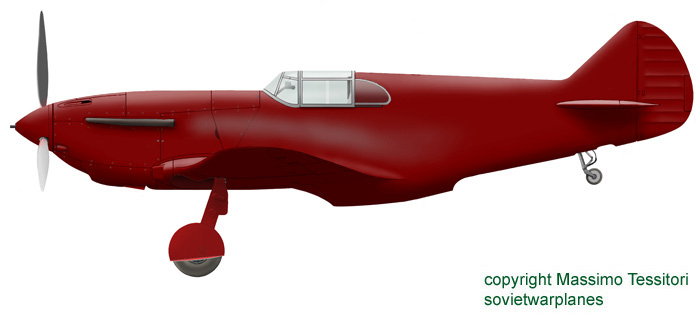 |
Profile of I-301 before the addition of two ShKAS over the nose. |
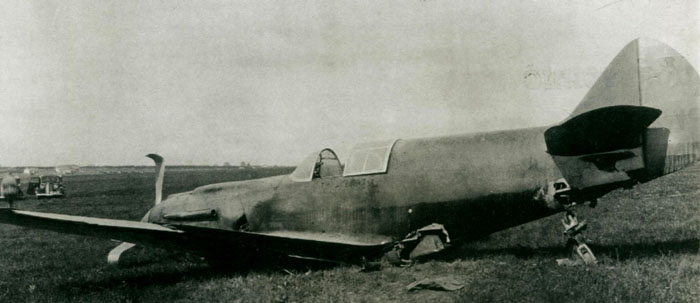
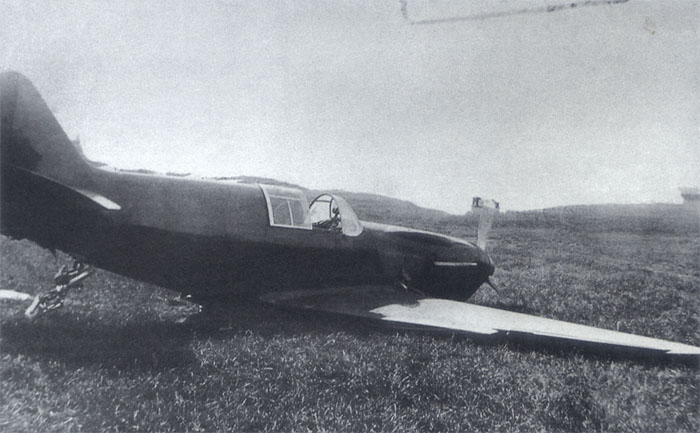
|
The I-301 first flew on 30 March 1940, flown by test pilot A.Nikashin,
that was favorably impressed. On May 1, the plane flew over the parade
in Moscow.
The factory tests were completed within 12 June; two days later, the
state tests at NII VVS began; they lasted 10 days, and 42 flights were
made. Apart for a list of defects, the results were satisfactory and it
was decided to continue with the development of the new fighter.
On August 11, 1940, pilot Nikashin was dazzled by sun on landing and
the plane was damaged.
The prototype was repaired and returned to fly, but the crankshaft bearings
failed in flight and Nikashin had to make another forced landing that
damaged the plane, that was definitively written off. |
 |
An image of the plane after the definitive accident. The rear fuselage
was broken off. The background of the photo looks to have been censored.
|
 |
Profile of I-301 after the addition of two ShKAS over the nose. |
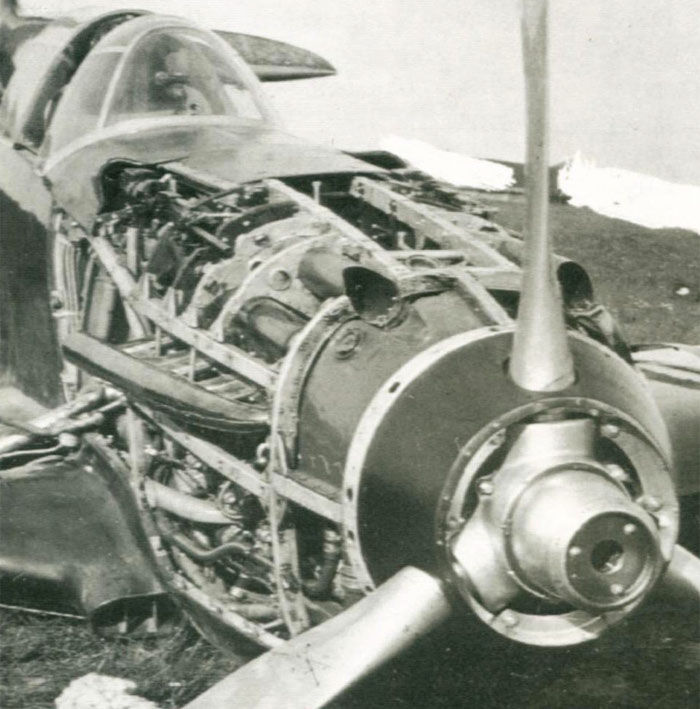 |
Lots of details are visible on this detail of the previous image.
Some differences respect to production LaGG-3s are visible here:
- different windshield with two nearly horizontal side struts;
- shorter exhaust pipes;
- spinner composed in different way;
- small oval wing root intakes for the carburetor.
|
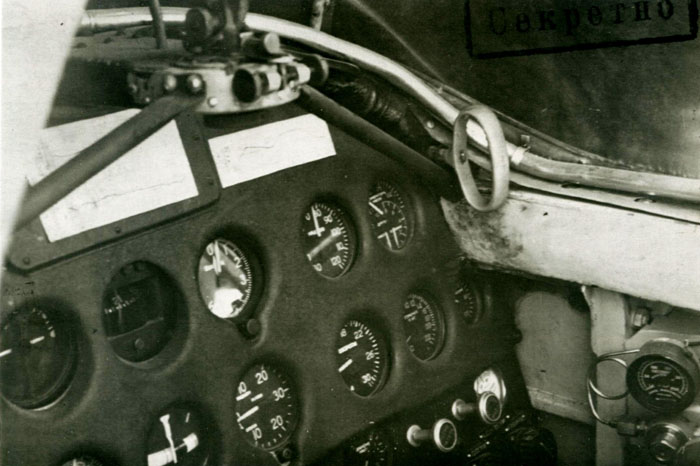 |
The instrument panel of I-301. |
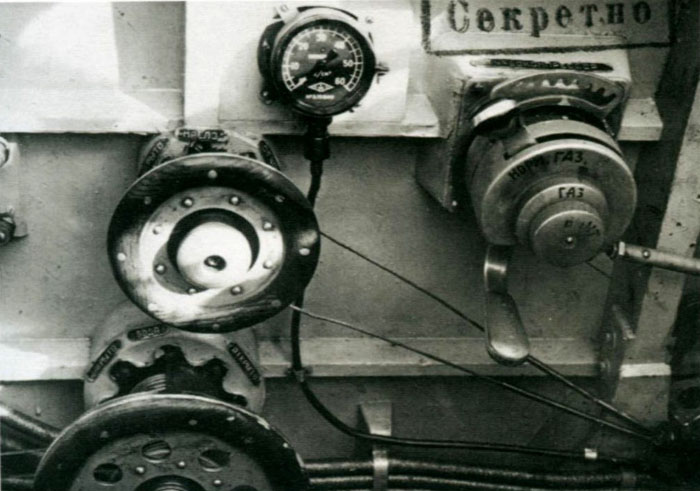 |
The left side of the cockpit of I-301. |
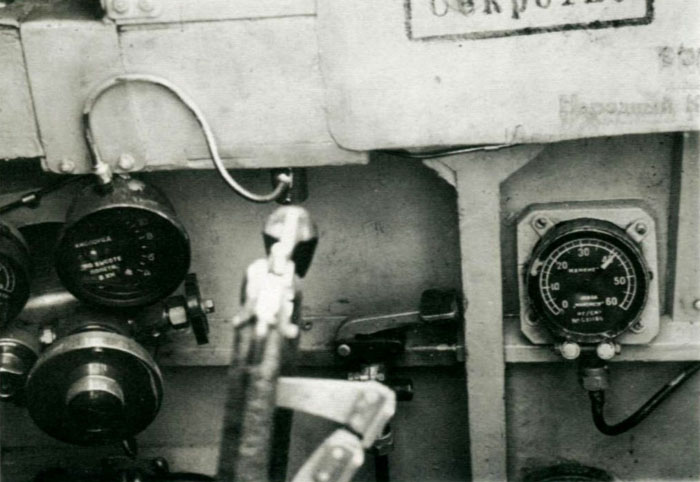 |
The right side of the cockpit of I-301. |
| |
|
Credits:
All photos are from:
Lavochkin's piston-engined fighters, red stars vol.10 of
Yefim Gordon (this is also the base for my text)
Wydawnictwo Militaria 249 - LaGG-3 of Kotelnikov, Orlov, Yakubovic
Drawings and the comparation between I-301 and LaGG-3 are my own.












